Vietnamese food is a whole new playground of food to me – although I’m from Singapore, I’ve always had so much more exposure to Japanese and Thai food that Vietnamese food has always slipped under the radar for me.
But not anymore! A very lovely invite to Bay Tinh gave me just the perfect reason to visit Marrickville, and learn more about Vietnamese cuisine.
Originally owned by Mr Tinh Tranh, Bay Tinh is so named because Mr Tinh was the sixth child in his family. He arrived in Australia as a refugee from Vietnam, and saved up every penny till he opened up Bay Tinh in 1988. When he decided to retire, he sold the restaurant to Harry Hoang, who’s taken the menu and added his own take on it, still serving the traditional Vietnamese food that Bay Tinh is known for, but also with the inclusion of his family’s recipes.
The entrée selection very conveniently came in entrée and main size options, which meant that we could comfortably sample the food across the menu without being so stuffed that we had to be rolled home.
Some of the entrees come in convenient individual portions, like the Duck Salad – Goi Vit (2 pieces), $12 (pictured above). Pieces of cooked duck is tossed through carrot and radish pickles, dusted with aromatic spices and served with a prawn cracker. While absolutely delicious and light, the pickles seem to be a common theme through the meal – the same combination of pickled vegetables are enjoyed as a condiment to many of the other dishes that we sampled.
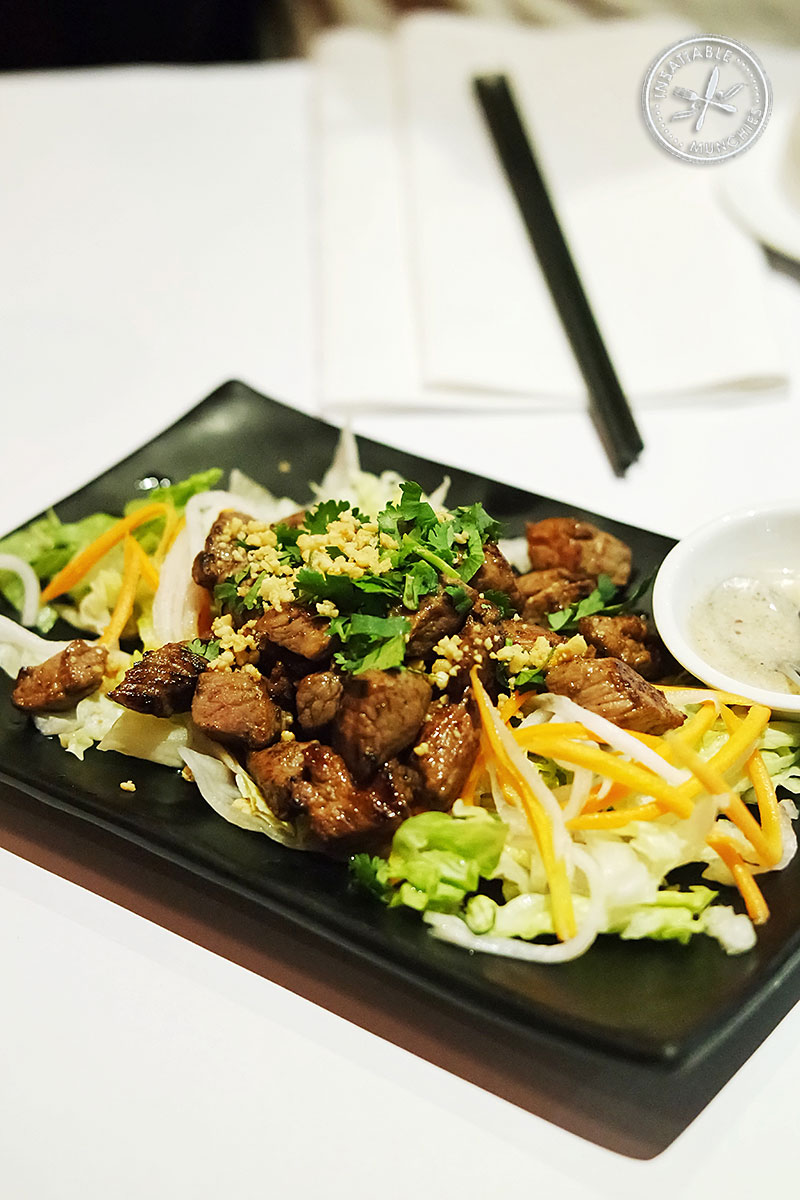
We also had the Bo Luc Lac, $14.50 – Tender beef cubes are marinated, and then flash fried and served with a salt, pepper and lemon juice mixture on the side. The beef was aromatic and packed full of flavour, and was beautifully balanced by the carrot and radish pickles that were served on the side.
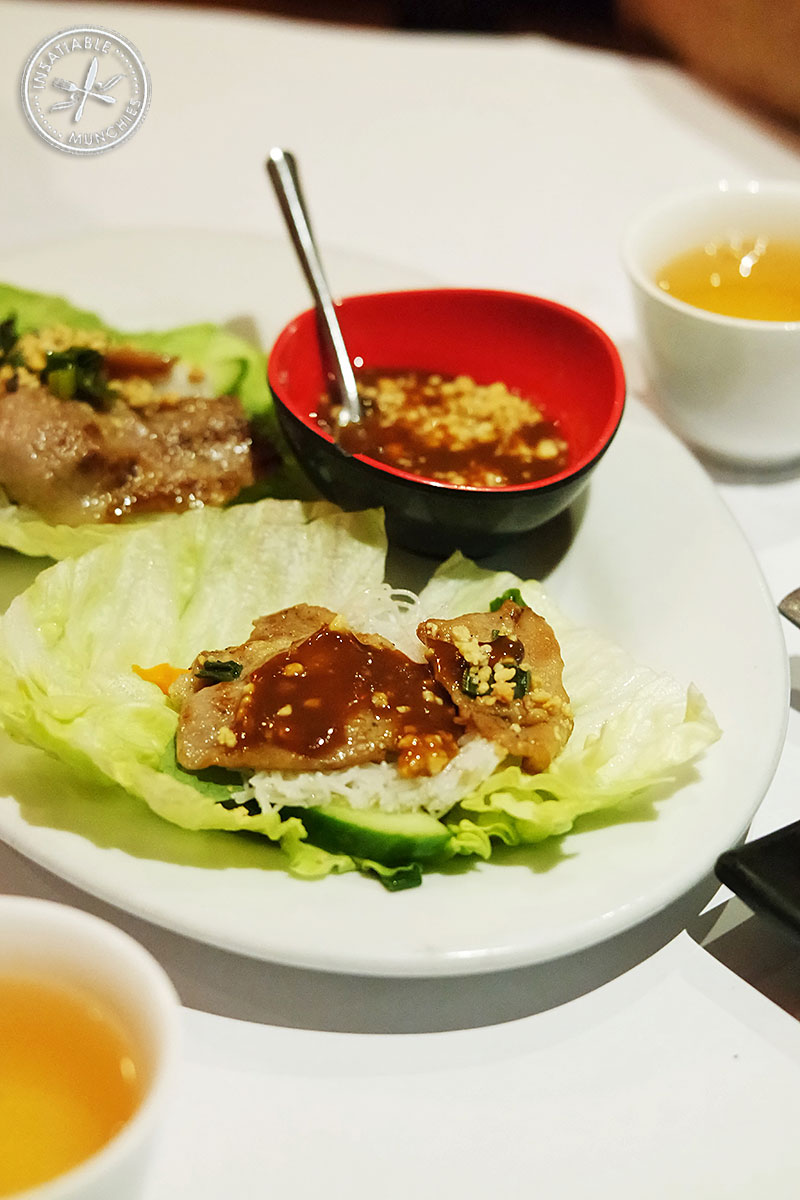
The Heo Nuong, $8, came out next looking like a Vietnamese Sang Choy Bao. Tender pieces of marinated pork were grilled on a skewer, then served on lettuce leaves, cucumber and rice vermicelli cakes, with hoisin sauce on the side. The peanuts added a lovely texture, and I love the freshness of the whole ensemble.
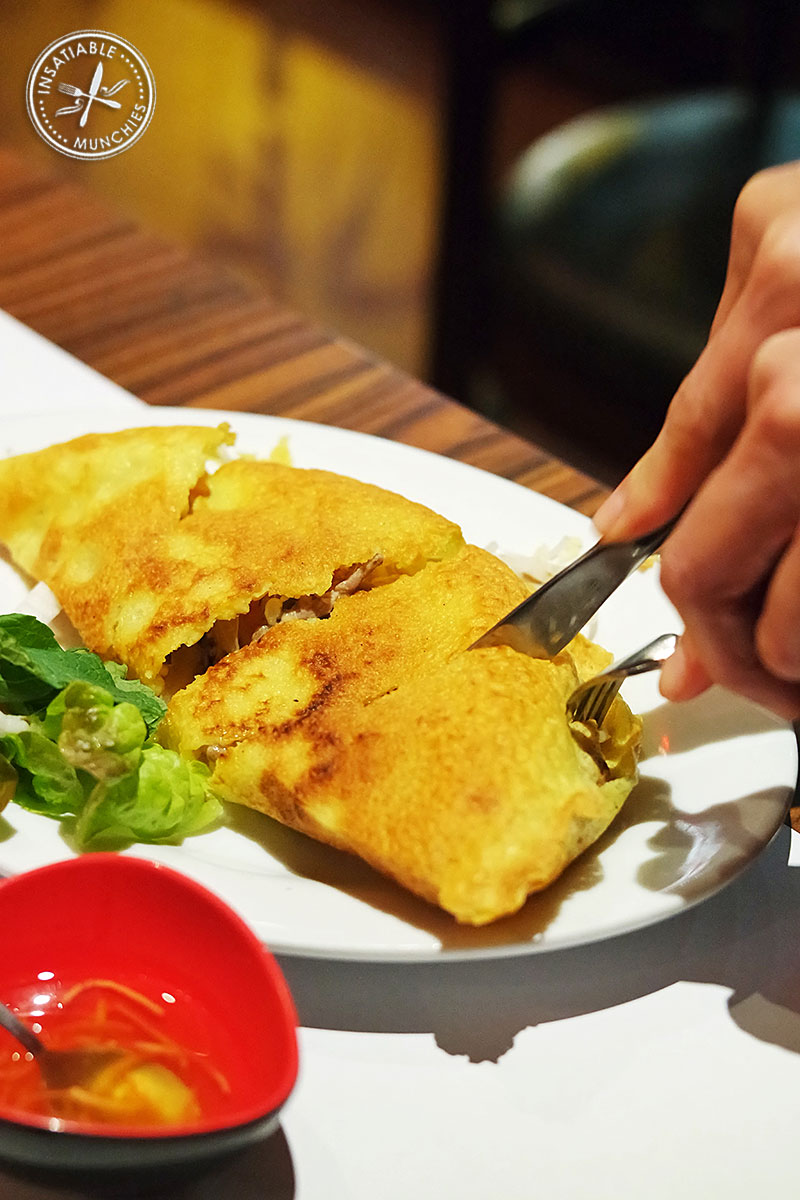
Banh Xeo, $14.50, is a crispy pancake filled with pork, shrimp, bean sprouts and mung beans. The pancake itself is made out of a rice flour slurry tinted yellow with turmeric, which breaks with a satisfying crunch when you cut into it.
The filling was also very generous, with the entree sized portion easily enough to fill you up as a main. Served with a nuoc cham dressing of fish sauce, vinegar and chilli, it’s the kind of dish that I can see myself enjoying at someone’s mother’s house. For this particular dish, I could see why it might not be for everyone – the mung beans added a slightly floury texture, much like lentils to a dhal, that I enjoyed, but Sam wasn’t quite as crazy about.
On a side tangent, I did like how much thought had gone into the preparation of this dish. Owner Harry explained to be that it had taken him 7 years to get the pancake to where he was happy with – now the rice flour slurry for the pancake is first fermented over a few days in order to add flavour, and improve the texture.
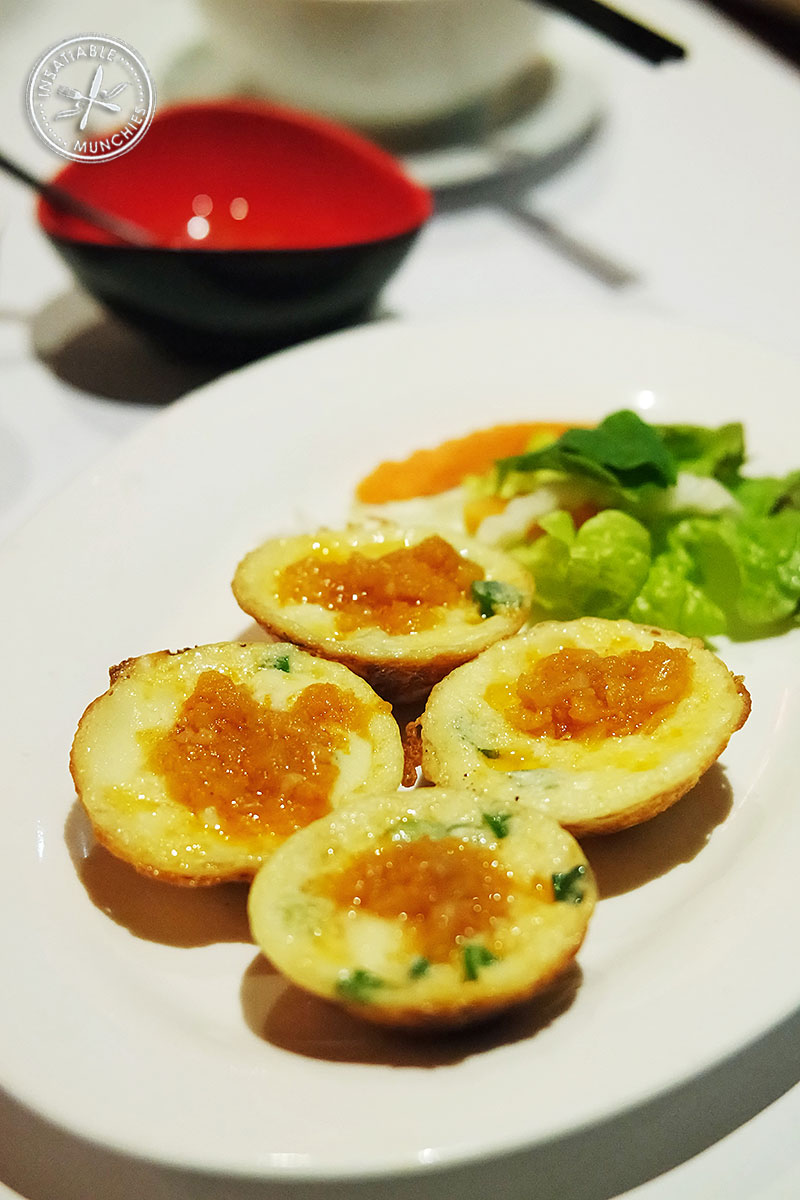
The Banh Khot, $13.50, was creamy and rich, with the rice cakes made from the same fermented rice flour slurry, with the addiction of fragrant coconut cream. Topped with a prawn/paprika mixture, these cakes have a slight ooze when you bite into the centre, and the aroma of coconut assaults your senses when the outer layer of the cakes is first breached.
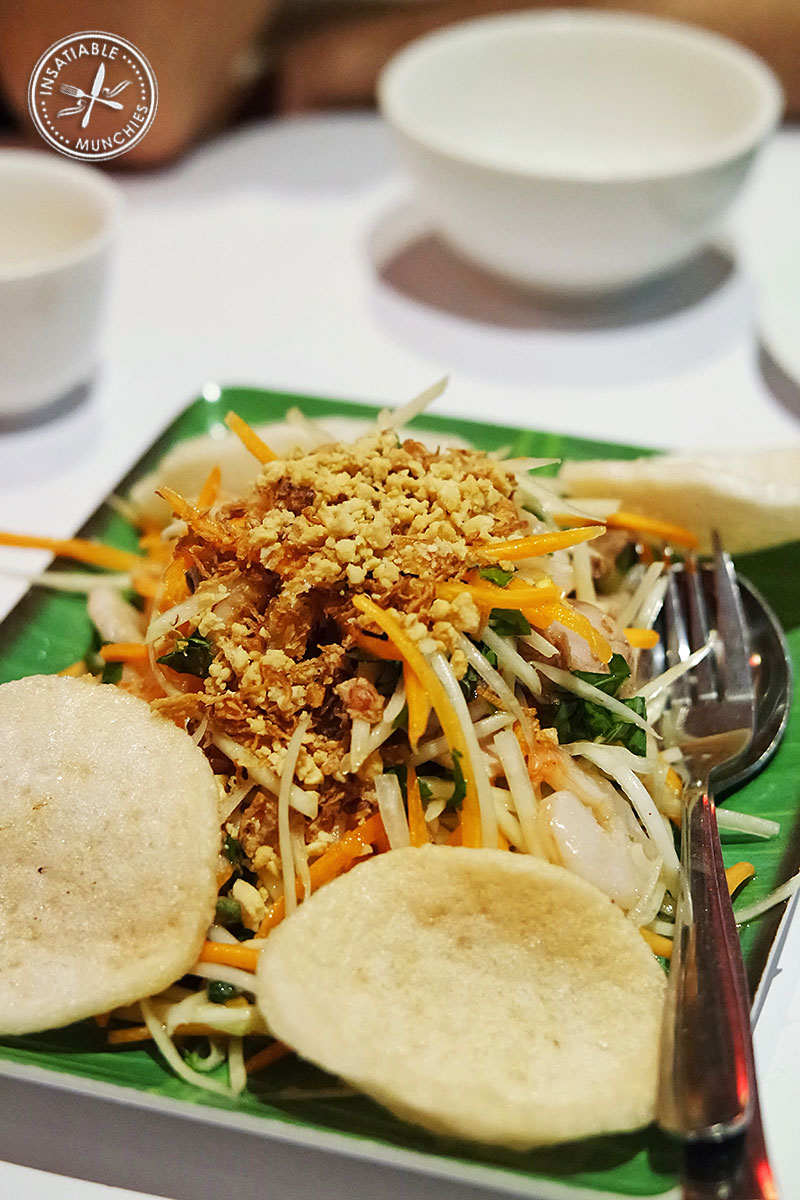
I can’t go past a papaya salad on a menu without ordering it, and this Goi Tom Thit, $13.80, is the much sweeter and lighter than the Thai versions that I’m used to having. Pieces of poached pork and prawn are tossed through crunchy strips of green papaya and carrot, and topped with a sweet dressing that just lightly lifts the salad. This salad, unadulterated by chillies or the fishiness of dried shrimp, makes me feel healthy just tucking into it.
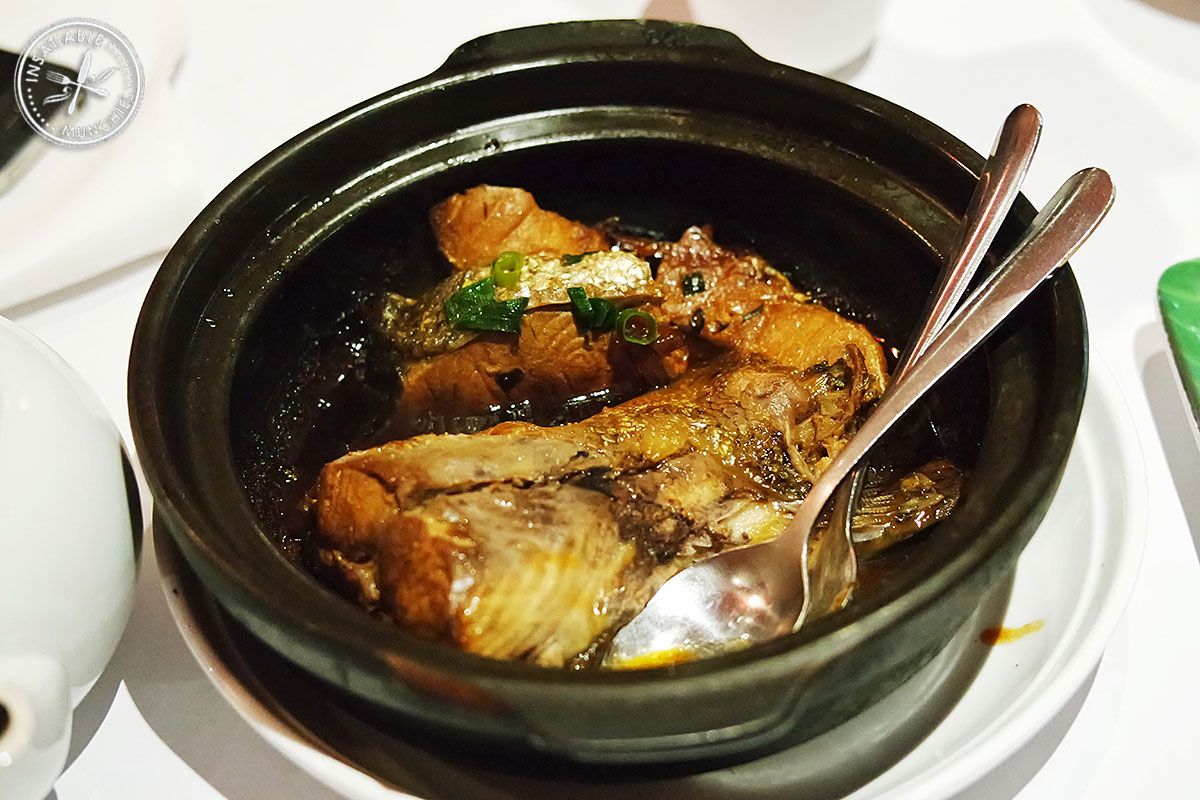
And finally, the piece de resistance. Ca Kho To, $24.50, is a sweet/salty fish stew that is traditionally part of the home dinner table. Here, owner Harry shares his mother’s recipe, and utilises the oilier salmon instead of the usual river fish. According to Harry, the reason for the swap out is because he can’t get a consistent supply of good river fish in Australia – they can sometimes be muddy in flavour. The fat from the salmon added a fantastic sense of luxury to this dish, and the intense soy based sauce is great on a bowl of steamed rice.
I had a great time at Bay Tinh, and really enjoyed the plush decor and buzzing crowds. It seems to be a favourite amongst the local families in the area, and is conveniently located just off Illawara Road. Bay Tinh provides a great oasis to take a seat and have a nice dinner when you’re all tuckered out from exploring the hidden gems of Marrickville. Bay Tinh is open 7 days for dinner, from 5:30pm.
Bay Tinh
02 9560 8673
318 Victoria Rd
Marrickville NSW 2204
http://www.baytinhrestaurant.com.au
Insatiable Munchies dined as guests of Bay Tinh and Angela Yalda Public Relations.
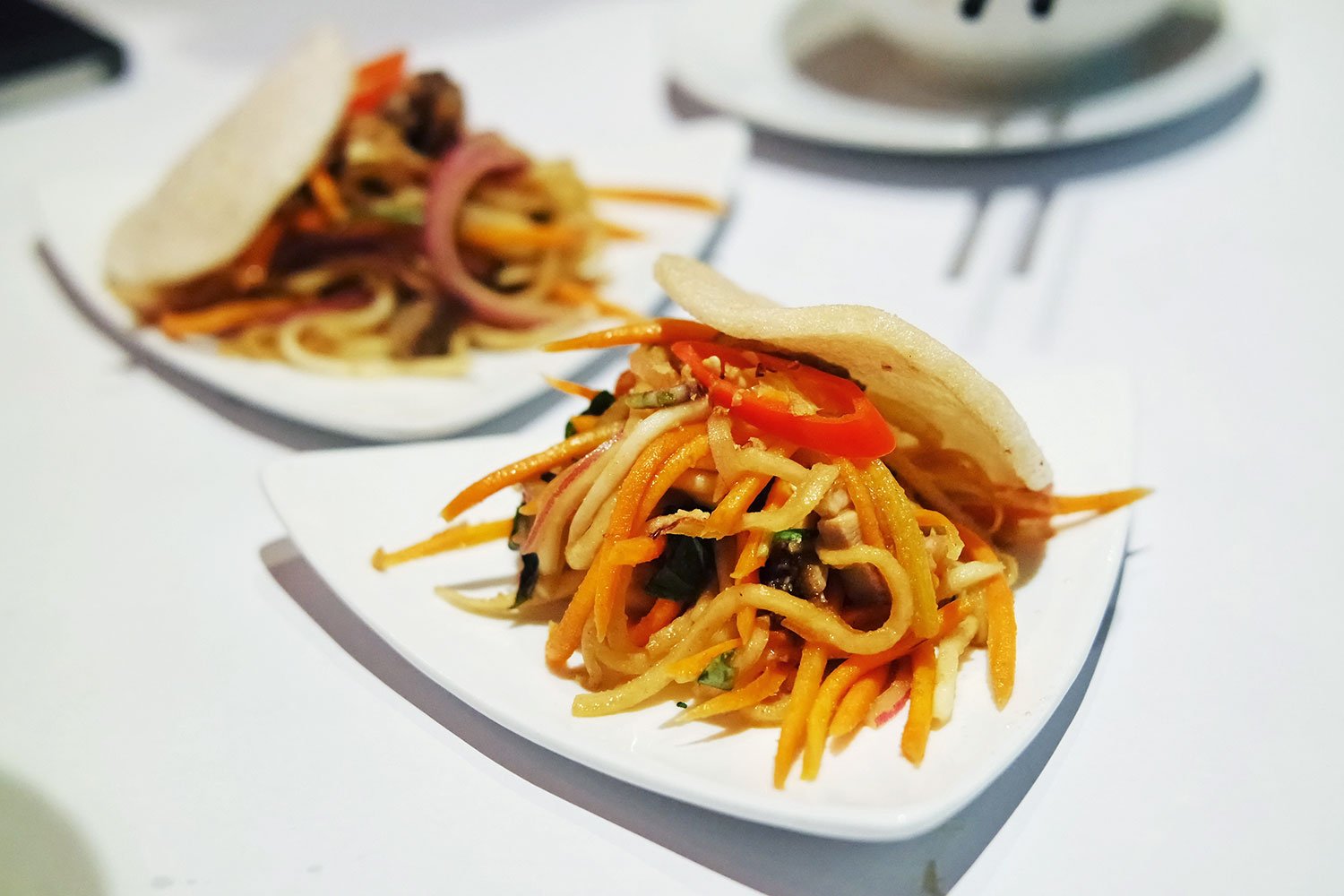
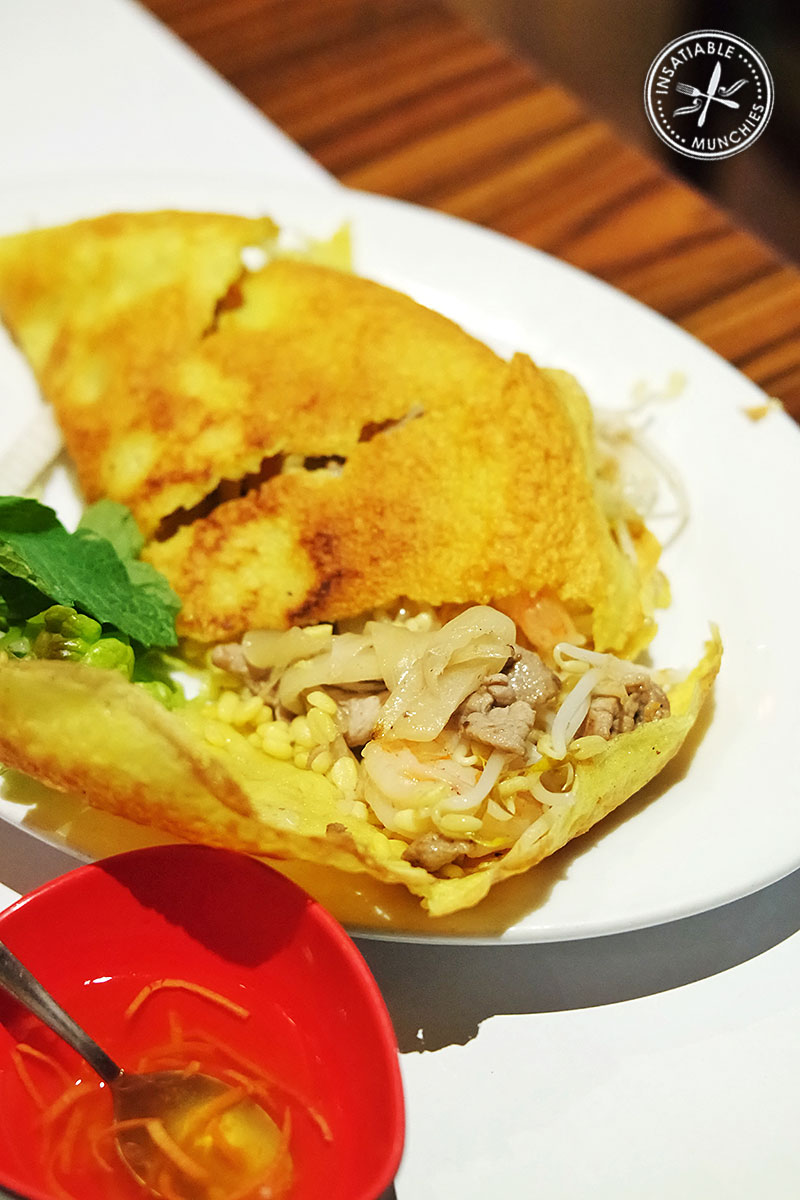

im a sucker for banh xeo!
I love Banh Xeo!! Especially when there’s lots leaves and veggies for you to eat it with and when it’s really crunchy
^ I agree with messy fish.. I can’t find any head cheese or pate exaltcy like, or just *as* good as the viet stuff.Also the bread! firstly it is far more sensibly sized and shaped in viet nam, perfect crust to inside ratio.. is it me or does anyone else find australian -french/vietnamese bread is just.. too bready and far too much inside, plus the rolls are wider and just not as easy to eat.I usually frequent top ryde another poster reccomended, usualy they are pretty good for aus banh mi. However if you go later in the afternoon the bread becomes chewy and that aussie squishy sandwhich loafy which really ruins it for me.The best banh mi I’ve had in australia is a hot bread place right at the end of the main street in marrickville very close to a chicken shop .. For me it’s also about the chilli paste which you get on all banh mi in viet nam.now if only I could import some of that lye from those trees on coola cham, maybe I could make my own cao lau at home too! I desperately want to find a recipe for the baguette in Hoi An, which to me was my favourite above saigon bread.. its just so crunchy but without the excessive flaking of the wider aus baguette and the right inside/crust ratio that is perfect for filling!Does anyone know the secret? I’ve heard that it’s rice flour, but the banh didn’t seem rice floury in Hoi An, just ever lastingly crispy even when its raining and muggy. I don’t know how they do it, but they sure do. I’m a bit of a hobby baker, if I work out a recipe/solution to the textural issues I’ll post back in case anyone else is wondering. I’m sure a combination of either imported wheat or the right rice to grind to flour and maybe the right fats must give you something similar! Of course the shape thing can be solved by rolling less dough tighter in the shaping process to give that drool inducing perfect narrow torpedo shaped baguette! Oh how I miss viet nam!